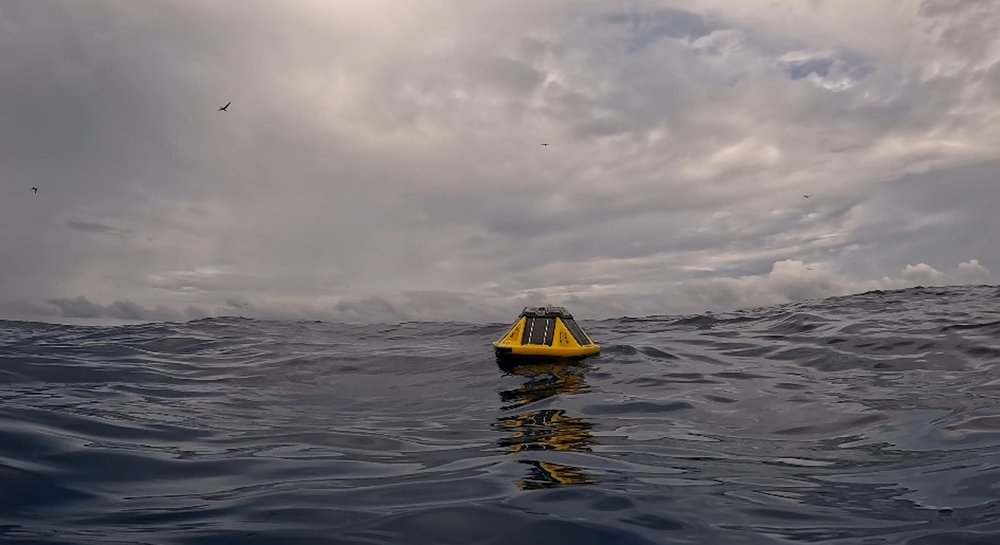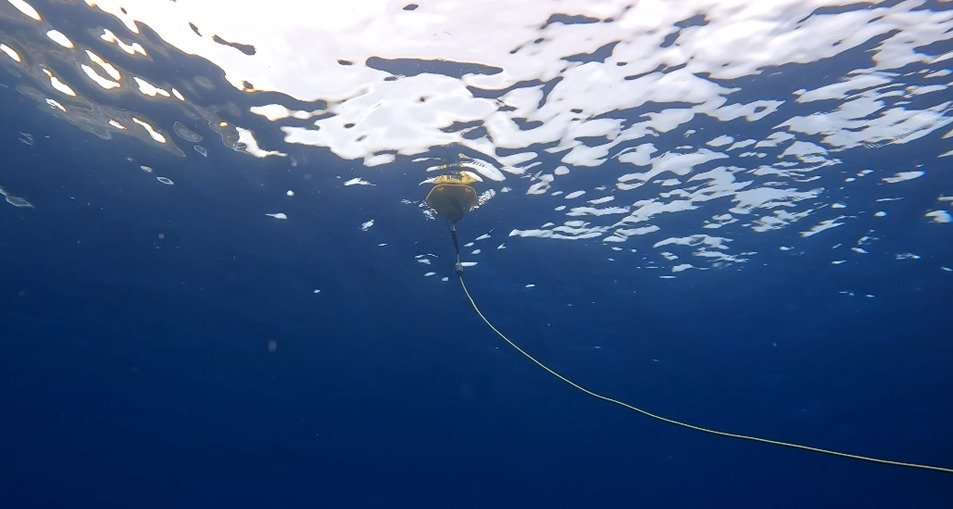An oceanographic buoy monitors the ocean temperature at Wellington Reef – Darwin Island, Galapagos
The Marine Ecosystems team of the Charles Darwin Foundation (CDF), the Galapagos National Park Directorate (GNPD), the Oceanographic and Antarctic Institute of the Navy (INOCAR for its acronym in spanish) and the philanthropic engineering organisation Aqualink, installed an oceanographic buoy in the north of the archipelago. The objective of which is to record different atmospheric and oceanographic parameters, including ocean temperature at both the surface and 18 m depth, in the Wellington Reef area, which are vital to understanding the changes suffered by Galapagos ecosystems due to climate disturbances.

The buoy is located near to Wellington Reef, the only structural coral reef of the Galapagos which survived the 1982/83 El Niño Southern Oscillation (ENSO) climate event. During this time 97% of the archipelago’s coral reefs and communities were lost, which is why this reef is considered of high importance for scientists and researchers alike, since it hosts one of the most diverse marine ecosystems in the Galapagos.
“The efforts of conservation and research by the GNPD and CDF, to reinforce the capacity and recovery of reef ecosystems through activities such as reef restoration, identifying tolerant species and the factors relating to the disturbance are priorities in the fight against the impacts of climate change” mentioned the principal investigator, Dr Inti Keith, of the Charles Darwin Foundation.
Historically, there were 17 structural coral reefs distributed around the different bioregions of the Galapagos. The 1982/83 El Niño event drove them to the border of extinction, particularly in the central region of the archipelago. Following this, coralline communities began to recover, however, the occurrence of a further climactic event in 1997/98 did not allow sufficient time for these to re-establish themselves. The Charles Darwin Foundation, in collaboration with the environmental authority, continues the monitoring of these species.

The information emitted by the oceanographic buoy, installed in March 2022, raised an alert about an increase of the temperature in the area, on degree centigrade higher (+1°C) than the universal limit for coral bleaching, which caused some concern; nevertheless, the apparent presence of localised cold-water upwelling at depth, recorded by the 18 m temperature sensor, aided in reducing the temperature across the reef. In April 2022, the thermal anomalies intensified with the continued presence of high temperatures, fortunately these began to rapidly decrease midway through the month, reaching a negative sea surface temperature (SST) anomaly of -2°C. Following this drastic change, both the SST and the temperature at 18 m have continued oscillating around the historical mean provided by National Oceanic and Atmospheric Administration (NOAA). This decrease in temperature has allowed for the Alert Level for coral bleaching to fall from Level 1 to Watch (NOAA).
“Recent studies suggest that the presence of cold-water flows in the northern region of the archipelago have helped with the survival of corals in extreme temperatures, which is encouraging for these species. As an environmental authority we have implemented other measures which contribute towards the restoration of these ecosystems, such as the experimental coral planting project in the bays where these species once existed” said Danny Rueda, director of the GNP.
"Despite this dangerous warming for the corals of the Galapagos Islands, there remains hope for their recovery, due to the cold water fluxes present at the depths where the corals are found, which were evident in the temperature sensor at 18m. However, constant monitoring of this reef and the recovering coral communities is of utmost importance to maintain the balance and health of the marine ecosystem of the Galapagos Marine Reserve." Mentioned marine scientist, Billy Bensted-Smith - of the Charles Darwin Foundation.





